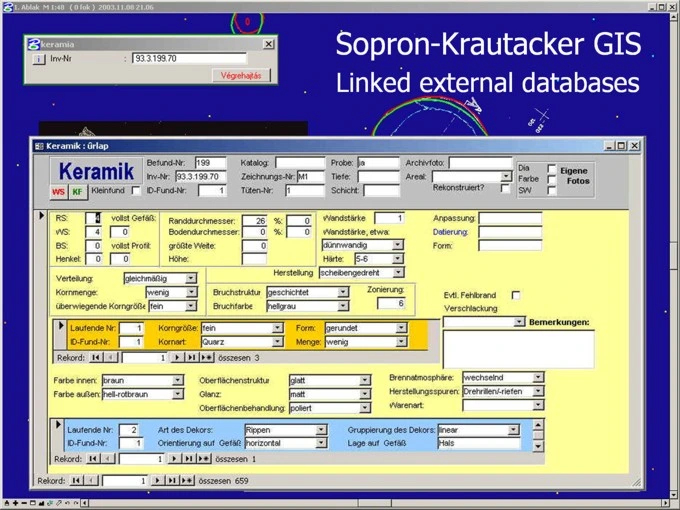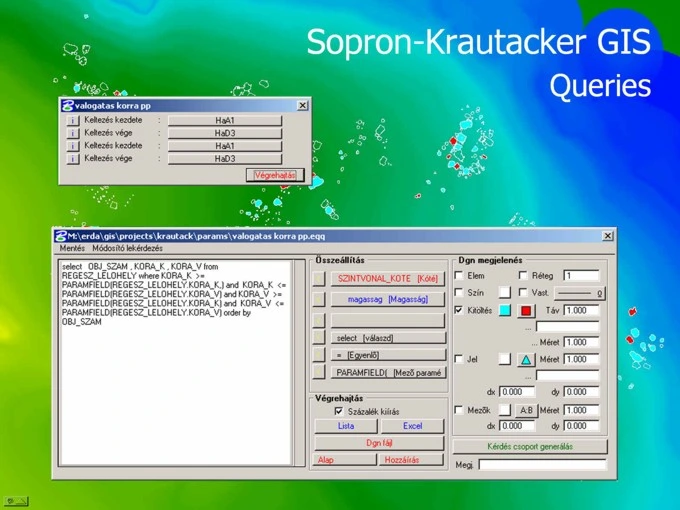Problems in the GIS evaluation of the Sopron settlement units
The archaeological site can be found in the north-western outskirts of Sopron (Hungary) at the Krautacker site, where a large-scale rescue excavation was conducted between 1973 and 1988 led by Dr. Erzsébet Jerem. The area excavated was over 20.000 sq m., where a multi-period riverside settlement and an adjacent cemetery were found. The site is situated on a plateau at an altitude of about 218 m, in a valley formed by Streams Ikva (Zeiselbach in German) and Liget between the Sopron and Ruszt Mountain Ranges.
At this site altogether 385 settlements were dug up and more than 180 graves were excavated. The evaluation of the materials of this important excavation and its publication is prepared within the framework of Hungarian-German scientific cooperation and supported by Áttekintő térképOTKA (Hungarian Science and Research Fund) and DAAD. Besides the Institute of Archaeology of the Hungarian Academy of Sciences, the Institutes of Prehistory of Marburg University and Berlin Freie University, as well as the Museum of Mining, Bochum are also taking part in the work which is to last for several years. Developing the GIS application, which was started 2 years ago, forms an important part of this project.



